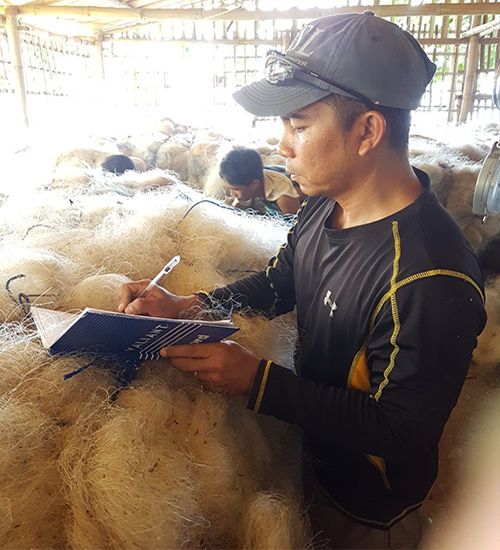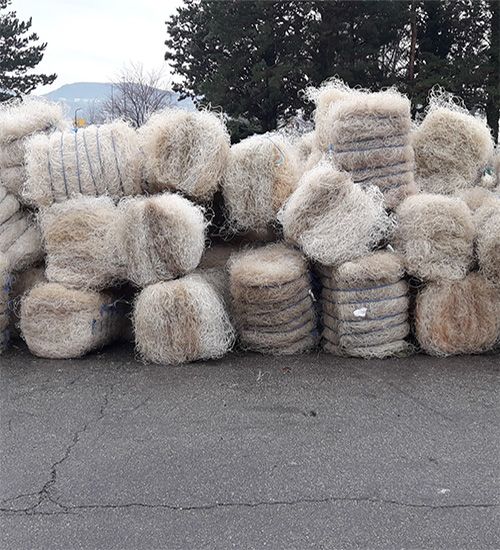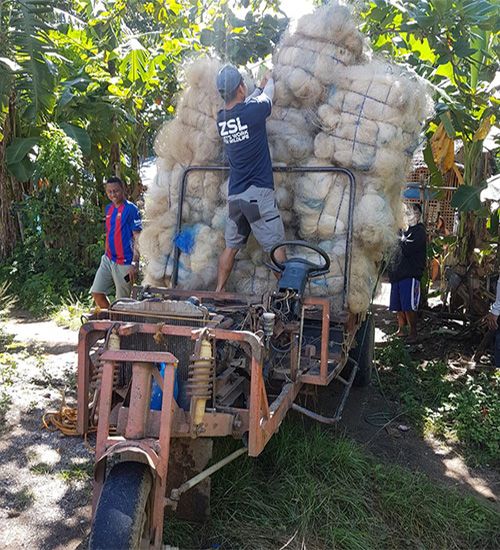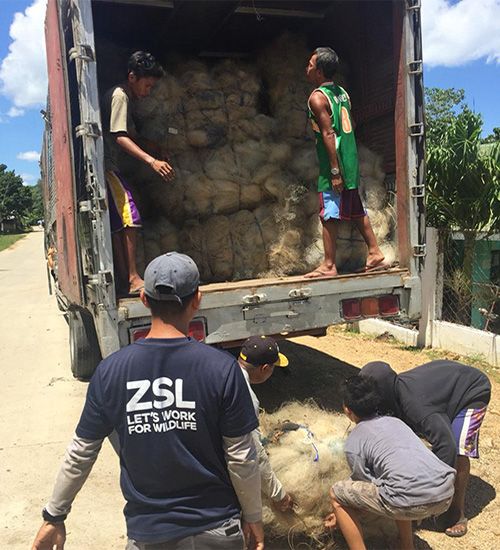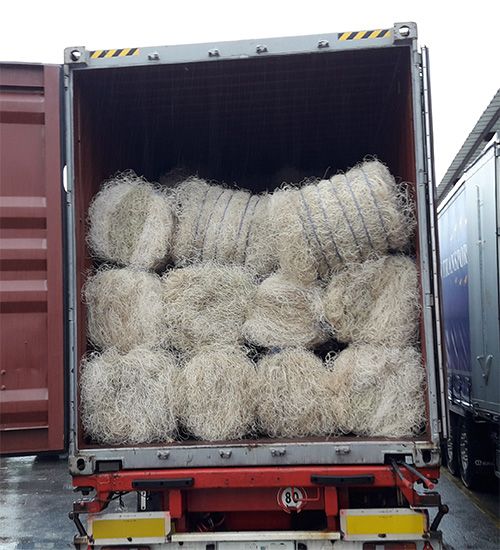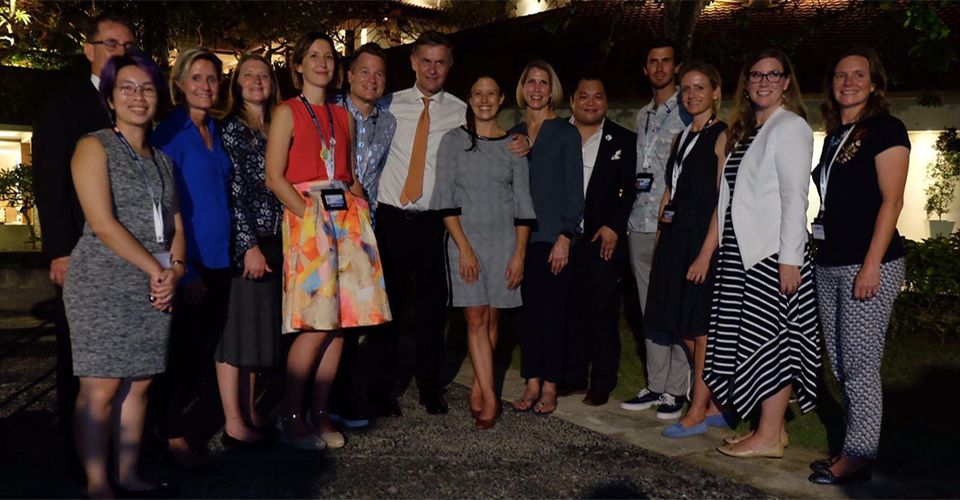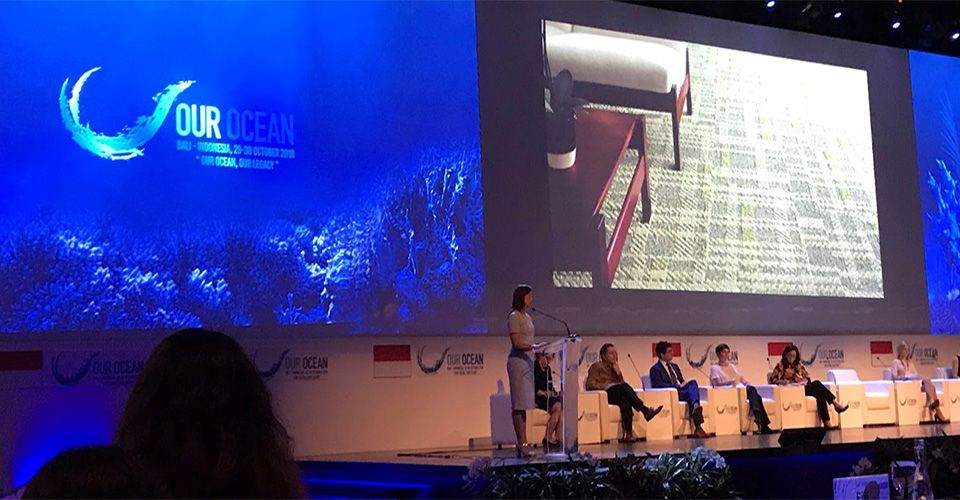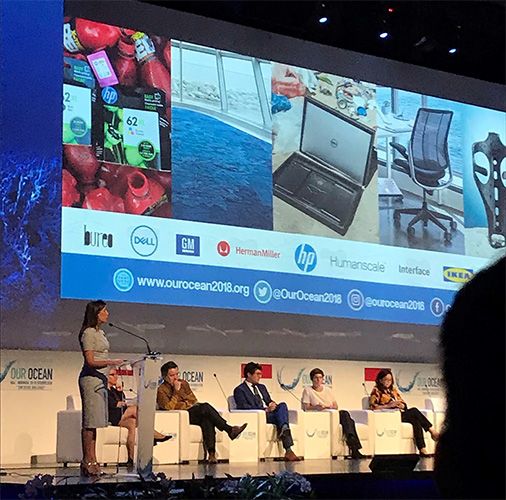Our Ocean
“The world is blue,” proclaimed Sylvia Earle, the world-renowned marine biologist, oceanographer and National Geographic Explorer-In-Residence.
At the recent Our Ocean summit in Bali, Indonesia, attendees pledged US$10 billion and made 3,000 commitments to improve the state of our oceans. The pledges focused on a range of issues from plastic pollution, to marine protected areas, and from fish stocks to creating a blue economy.
Stopping plastic waste from entering our oceans
A common theme at the event was that it is time to act on the amount of plastic waste entering the ocean. On our current trajectory, it is estimated that by 2050 there will be more plastic in the sea than fish by weight.
Following the bans and levies on single-use plastic that Asian countries have been rolling out in quick succession, documentaries such as the BBC’s Blue Planet II, and campaigns such as Lonely Whale’s Strawless Ocean, Bye Bye Plastic Bags and Sky Ocean Rescue, consumers and businesses alike are more aware of the issue of plastic pollution than ever before. In addition, there’s pressure to ensure that this awareness is converted into impactful action.
Taking action with Net-Works and NextWave
At Interface we have been using yarns incorporating waste fishing nets since 2011, and through our Net-Works partnership with the Zoological Society of London and Aquafil, we’ve been able to turn more than 208 tonnes of nets into yarn, providing financial benefit to more than 2,200 families and a healthier marine environment for more than 64,000 people.
Artisanal fishing communities sorting reclaimed ghost fishing nets in Indonesia. 10 tonnes of these fishing nets recently arrived at Aquafil in Slovenia to be transformed into yarn for our carpets. Photo by Aquafil, ZSL
Photo by Aquafil, ZSL
Photo by Aquafil, ZSL
Photo by Aquafil, ZSL
Photo by Aquafil, ZSL
In 2017, we joined NextWave Plastics, a working group committed to scaling the use of ocean-bound plastics by developing the first global network of ocean-bound plastics supply chains. It is a cross-sector group that started with members such as Dell, Herman Miller, Humanscale, General Motors, Bureo Skateboard and Trek Bicycles. In October 2018, we welcomed IKEA and HP Inc to the ranks.
At the Our Ocean conference, NextWave committed to divert a minimum of 25,000 tonnes of plastics, the equivalent to 1.2 billion single-use plastic water bottles, from entering the ocean by the end of the year 2025. In addition, representatives from NextWave met with Erik Soldheim, the Executive Director of UN Environment and held a panel discussion with an audience of NGOs, government representatives and fellow businesses to share lessons we’ve learned and the challenges businesses face in tackling this problem.
Drawing a line in the sand on plastic in our oceans
NextWave Plastics was not the only group to commit to tackle plastic waste:
- More than 290 companies, representing 20 percent of all plastic packaging produced globally, joined the Ellen MacArthur Foundation for a global commitment to eliminate, innovate and to embrace a more circular approach on plastics. Signatories include Danone, H&M Group, L’Oreal, Mars, Incorporated, PepsiCo, Coca-Cola Company, and Unilever.
- Circulate Capital has raised more than US$100 million to invest in solutions to prevent ocean plastics, demonstrating that the finance world is also sitting up and taking notice.
Discover more about NextWave by visiting www.nextwaveplastics.org and for more about Interface’s work to inspire a Climate Take Back, visit interface.com/climatetakeback
NextWave members meet with Erik Soldheim, Executive Director, and Lisa Svensson, Global Director for the Oceans, from the UN Environment and Dr Jenna Jambeck of the University of Georgia
NextWave members at Our Ocean
NextWave announces its commitment at Our Ocean to divert a minimum of 25,000 tonnes of plastics, the equivalent to 1.2 billion single-use plastic water bottles, from entering the ocean by the end of the year 2025
